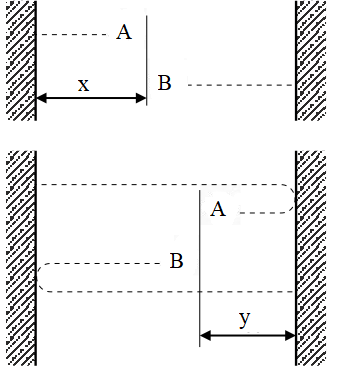Events & Promotions
|
|

GMAT Club Daily Prep
Thank you for using the timer - this advanced tool can estimate your performance and suggest more practice questions. We have subscribed you to Daily Prep Questions via email.
Customized
for You
Track
Your Progress
Practice
Pays
Not interested in getting valuable practice questions and articles delivered to your email? No problem, unsubscribe here.
- Nov 20
07:30 AM PST
-08:30 AM PST
Learn what truly sets the UC Riverside MBA apart and how it helps in your professional growth - Nov 22
11:00 AM IST
-01:00 PM IST
Do RC/MSR passages scare you? e-GMAT is conducting a masterclass to help you learn – Learn effective reading strategies Tackle difficult RC & MSR with confidence Excel in timed test environment - Nov 23
11:00 AM IST
-01:00 PM IST
Attend this free GMAT Algebra Webinar and learn how to master the most challenging Inequalities and Absolute Value problems with ease. - Nov 25
10:00 AM EST
-11:00 AM EST
Prefer video-based learning? The Target Test Prep OnDemand course is a one-of-a-kind video masterclass featuring 400 hours of lecture-style teaching by Scott Woodbury-Stewart, founder of Target Test Prep and one of the most accomplished GMAT instructors.
Kudos
Bookmarks
C
Be sure to select an answer first to save it in the Error Log before revealing the correct answer (OA)!
Difficulty:
 95%
(hard)
95%
(hard)
Question Stats:
45% (02:23) correct 55%
(02:18)
wrong
55%
(02:18)
wrong  based on 99
sessions
based on 99
sessions
History
Date
Time
Result
Not Attempted Yet
Two cyclists start moving simultaneously from opposite ends of a straight track towards each other back and forth. Cyclists' speeds are constant, but one is faster than the other. First time, the cyclists meet each other at a distance of \(x\) meters from the nearest end of the track. Second time, on the way back, they meet \(y\) meters from the other end of the track. What is the length of the track?
(1) \(x = 720\) meters
(2) \(y = 400\) meters
(1) \(x = 720\) meters
(2) \(y = 400\) meters
Kudos
Bookmarks
Official Solution:
Two cyclists start moving simultaneously from opposite ends of a straight track towards each other back and forth. Cyclists' speeds are constant, but one is faster than the other. First time, the cyclists meet each other at a distance of \(x\) meters from the nearest end of the track. Second time, on the way back, they meet \(y\) meters from the other end of the track. What is the length of the track?
Check the image below:

By the time of their first meeting, the total distance the two cyclists have covered equals to the the length of the track (check top image: A and B together covered 1 full length of the track).
By the time of their second meeting, the total distance the two cyclists have covered equals to three times the length of the track (check the lower image: A and B together covered 3 full lengths of the track).
Since the speeds are constant, the second meeting (after covering 3 full lengths of the track) occurs after a total time that is thrice the time for the first meeting (after covering 1 full length of the track). So, if by the time of their first meeting, cyclist A covered \(x\) meters, then by the time of their second meeting, cyclist A covered \(3x\) meters (3 times the distance in 3 times the time).
Now, check the lower image again, the total distance A covered (\(3x\) meters), is \(y\) meters more than the length of the track, so the length of the track is \(3x-y\) meters.
So, to get the length we only need to know the values of \(x\) and \(y\), while speeds are irrelevant.
(1) \(x = 720\) meters
Not sufficient.
(2) \(y = 400\) meters
Not sufficient.
(1)+(2) The length of the track is \(3x-y=3*720-400=1760\) meters. Sufficient.
Answer: C
Two cyclists start moving simultaneously from opposite ends of a straight track towards each other back and forth. Cyclists' speeds are constant, but one is faster than the other. First time, the cyclists meet each other at a distance of \(x\) meters from the nearest end of the track. Second time, on the way back, they meet \(y\) meters from the other end of the track. What is the length of the track?
Check the image below:

By the time of their first meeting, the total distance the two cyclists have covered equals to the the length of the track (check top image: A and B together covered 1 full length of the track).
By the time of their second meeting, the total distance the two cyclists have covered equals to three times the length of the track (check the lower image: A and B together covered 3 full lengths of the track).
Since the speeds are constant, the second meeting (after covering 3 full lengths of the track) occurs after a total time that is thrice the time for the first meeting (after covering 1 full length of the track). So, if by the time of their first meeting, cyclist A covered \(x\) meters, then by the time of their second meeting, cyclist A covered \(3x\) meters (3 times the distance in 3 times the time).
Now, check the lower image again, the total distance A covered (\(3x\) meters), is \(y\) meters more than the length of the track, so the length of the track is \(3x-y\) meters.
So, to get the length we only need to know the values of \(x\) and \(y\), while speeds are irrelevant.
(1) \(x = 720\) meters
Not sufficient.
(2) \(y = 400\) meters
Not sufficient.
(1)+(2) The length of the track is \(3x-y=3*720-400=1760\) meters. Sufficient.
Answer: C
General Discussion
Kudos
Bookmarks
Bunuel could you please share more questions like this to pratice?












